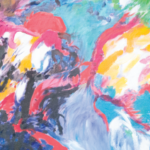• Moodle
When designing, developing and implementing online or remote sessions and courses, one should use digital tools that help create and maintain instructor presence. Instructors should also interpret traditional active learning principles through technological and multimedia components to promote learner engagement, interaction and collaboration.
Interestingly, audio and video recordings that feature instructors and learners themselves have a humanizing effect and help learners feel connected to their peers and instructors.8,9 If recording capabilities are available, consider having online learners create introductory videos.
As with in-person courses, instructors in online/remote environments need to provide learners with a syllabus detailing reading and multimedia assignments, assessment types and dates, grading rubric and instructor office hours. Equally important, instructors need to provide learners with information on available technology support, clear instructions on how to access content and materials via the course platform or organizational library, and expectations for online discussion room and/or virtual classroom interactions and etiquette.
Instructors should also anticipate increased work hours surrounding their online/remote course presence. Beyond an expanded syllabus, instructors should provide learners with welcoming or introductory emails or videos, and must appreciate the importance of asynchronous feedback on assignments and assessments being immediate.3,6,8,9
Include Multimedia
Multimedia content is particularly important for engaging online/remote learners. Effective multimedia materials don’t serve as decorations to other instructional content, but enhance the learning process. If insufficient multimedia materials are available, instructors need to create them. In online/remote instructional sessions and courses, poor multimedia design and recording gaffs are magnified and distracting for learners. Again, consider consulting an audiovisual technician for help creating engaging multimedia content.
When creating presentations in PowerPoint, Keynote or other presentation program, adhere to visual design principles:
- Develop a theme and create an atmosphere in uncluttered layouts;
- Highlight key points only;
- Try to keep one main idea per slide;
- Alternate text with graphics, illustrations, images or photographs;
- Combine upper- and lowercase text, which the eye sees/reads better;
- Use sans serif fonts (e.g., Arial), which better display online;
- Use high-contrast colors;
- Use clear and concise legends and axis titles in figures and tables; and
- Be sure to clear copyright as needed for images and photographs.
When recording audio and video, instructors should test their voices for breathing and pronunciation issues, for example, plosives (i.e., consonants produced by stopping the airflow using the lips, teeth or palate, followed by a sudden release of air, such as t, k and p [voiceless] and d, g and b [voiced]) and fricatives (i.e., consonants made by the friction of breath in a narrow opening, producing a turbulent air flow, such as f and th). These issues can often be resolved by using a pop filter and/or a better microphone. Unless adept at navigating web-based resources and databases, use a screen capture tool to create images for insertion into a presentation, then record the presentation. Whether recording audio or video, work from a script or notes to avoid awkward pauses.


